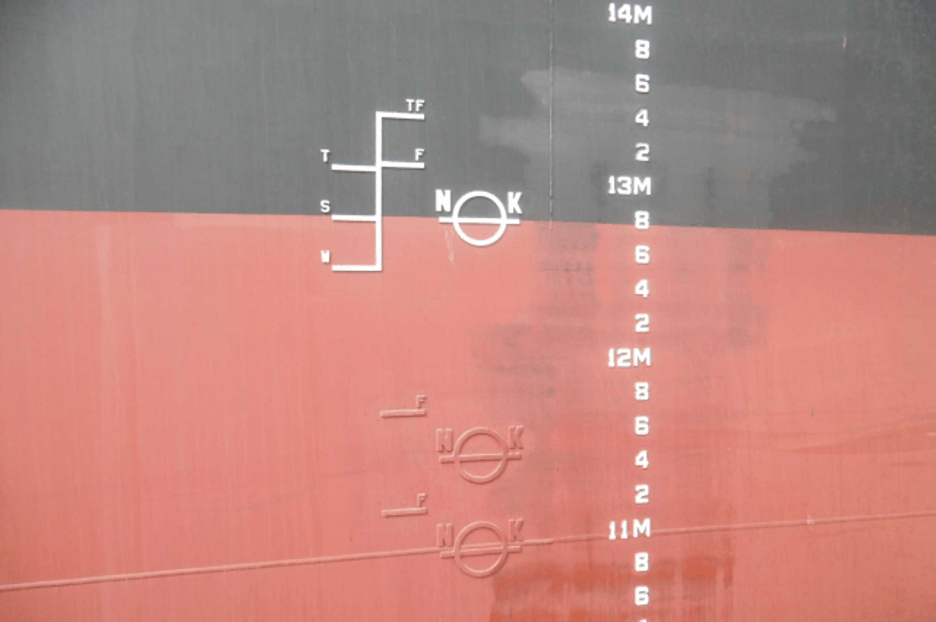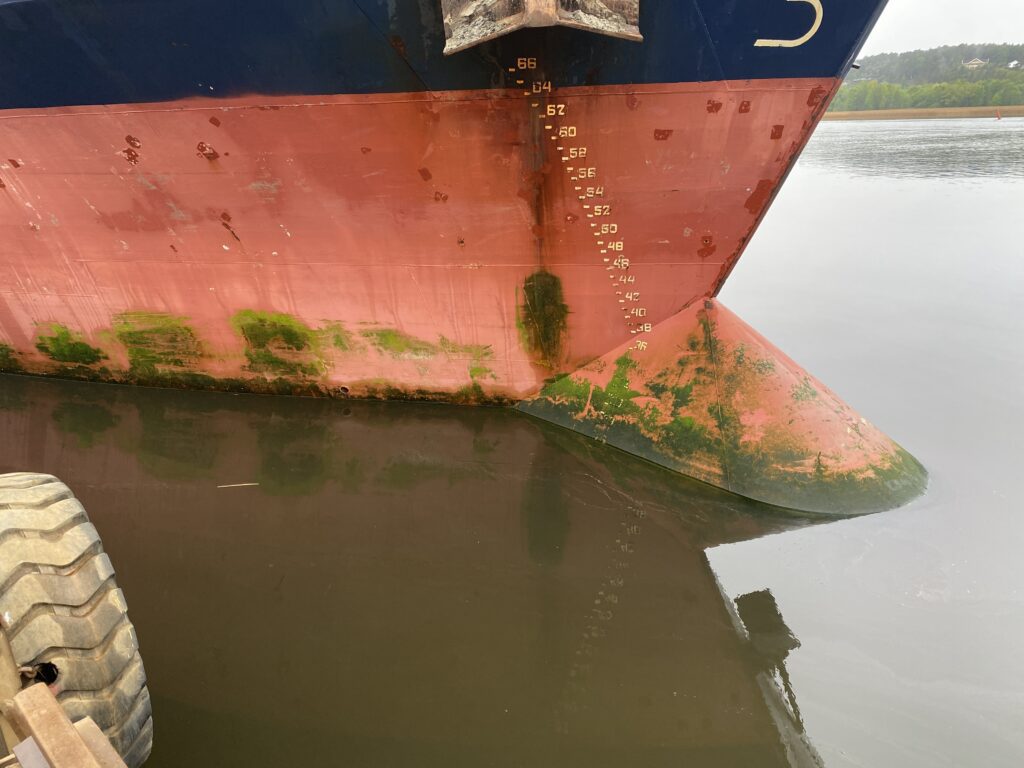A ship’s ability to navigate safely through a particular area of water depends on how the ship “sits” in the water, in other words, her underwater profile. Her underwater profile which is dependent on her draught determines how much cargo she can load.
The draught of a ship determines her displacement, particularly how much underwater volume she presents to water resistance and hence her speed, and her waterplane area, the area of her volume at the waterline influences how she rolls or pitches in a seaway.
The term “draught” or draft (American) refers to the depth of water that a ship needs in order to float. In other words, it is the measurement from the waterline to the bottom of the hull.

The draught of a ship is an important factor to consider when constructing and operating a vessel. It affects the stability, fuel consumption, and cargo capacity of the ship, and must be carefully considered to ensure the safe and efficient operation of the vessel. In this article, we will be discussing the draught of a ship and its effect on both the commercial and physical performance of the ship.
The Draught of A Ship
The term “draught” refers to the depth of water that a ship needs in order to float. In other words, it is the measurement from the waterline to the bottom of the hull. The keel is the lowest point of the ship’s hull, and the waterline is the line where the water meets the ship’s hull.
The draught is determined by the ship’s buoyancy – the force exerted upwards on the hull by the water it is floating in, and the force of gravity which is the fore acting downwards by the weight of the ship and its cargo. These factors can cause the draught to vary greatly, depending on the situation.
The draught of a ship can vary depending on several factors, such as the type of ship, its size, and the weight of its cargo. Heavier ships will have a deeper draught, while lighter ships will sit higher in the water and have a shallower draught.
The draught when the vessel is stationary is referred to as static draught and as dynamic draught when the ship is moving. The dynamic draught might differ from the static because of influences the vessel might have on the static draught such as sinkage or in nautical terms – the squat effect. This hydrodynamic phenomenon is of concern when transiting shallow waters. If you want to go further with the dynamic draught theory, read this article about the squat effect and how to calculate it for your ship.
Draughts are marked on the hull with a “banded” scale at the bow and stern, and for some ships, also amidships on both sides, where international load line markings may be present. The scale can use either Imperial or metric units. If the Imperial system is used, the draught in feet is printed at the bottom of each marking, and the markings are 6 inches high and spaced at 1-foot intervals.
In metric marking, the draught in decimeters is at the bottom of each draught mark, and each mark is one decimeter high, spaced at two decimeters intervals. Draught marks are therefore marks required by law to be painted at the bow and stern of a ship to show how much water she draws.
Because the draughts used in a vessel’s hydrostatic tables are meant to be the draughts at the perpendiculars and these are slightly different from the actual draught markings on the ship, accurate draughts that are used by draught surveyors are usually corrected for this small difference.
A difference in the port and starboard draughts at a particular section of the ship indicates the ship has a list while a difference in the forward and stern draughts indicates a trim.
How Does The Draught Of A Ship Affect Its Performance?
A ship’s hydrodynamic performance under loaded and ballast conditions could be significantly different due to changes in the draught and as a result the wetted surface area.
Wetted surface area is widely used in shipping to estimate ship resistances which has a significant impact on fuel consumption. Changes to wetted surfaces and thereby the frictional resistance will depend on the depth and volume of the ship that sits in the water.

Effect Of Draught On Speed
More weight – a deeper draught, always means more inertia, so the heavier ship requires more power to get to the same speed. If you compare two otherwise similar ships, the heavier one will sit lower in the water, creating more frictional and wave resistance as well.
At a smaller draught, the smaller displacement will result in less inertia to overcome, and therefore at the same propulsion power, the speed will be greater. Similarly, the lighter draught will result in a less wetted surface with a consequent less frictional drag that will also result in higher speeds.
On the other hand, a deeper draught implies a bigger displacement with more inertia to overcome and therefore slower speed. It will also be an increase in wetted area and a greater frictional drag both from the greater wetted surface and greater frictional forces at greater depth with a consequent reduction in speed.
How Does The Draught Of A Ship Affect Its Cargo Carrying Capacity?
Using the Archimedes Principle of hydrostatics, the draught of a vessel helps to measure the total weight that the vessel has taken on. In a nutshell, the weight of a body is proportional to the volume of water displaced when it is submerged or floating.
The volume of water displaced is equal to the vessel’s underwater volume. The vessel’s underwater volume can be calculated using the Bonjean curves generated during the manufacturing and design processes.
A vessel that is built to operate at a deeper draught can therefore carry much more cargo than one built to operate at a lesser draught.
Conclusion
The draught of a ship is an important characteristic of its ability to carry out its assigned functions. The draught determines how the ship sits in the water – the displacement.
The deeper it sits in the water, the greater the amount of cargo it can carry, and the smaller the draught, the more ports it can trade to, both being economic considerations. In addition, the draught determines the amount of resistance it meets with from the water it is floating in, both affecting the vessel’s speed and maneuverability.
- Types of Gas Carriers as per IGC Code – April 22, 2025
- Wind-Assisted Propulsion Systems (WAPS): A Game Changer for Maritime Decarbonization – February 6, 2025
- 10 Boat Salvage Yards in California – January 25, 2025




